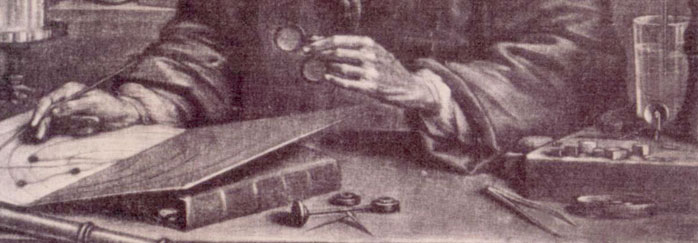Adam Silo (1674 - 1760)
 Field(s) of interest: optics | paining |
Field(s) of interest: optics | paining |Gender: male
Born: Amsterdam, 1674
Died: Amsterdam, 1760
Biography:
Silo was a gifted and skilled general technician, who became involved in making telescopes. In 1695 he worked in Amsterdam as a producer of gold threads (“gouddraattrecker”). According to the eulogy of an anonymous friend (the painter Cornelis Ploos van Amstel?), Silo specialized in the production of metal tubes. As a producer of metal tubes he was introduced into telescope making. In the 1690s Silo invented a way of pulling lead and tin tubes, which mostly were used for distillation equipment and fountains, including those in the French waterworks of Marly and Fontainebleau. Silo is also credited for the invention of cutting rods for velvet weavers. (“snijroeden voor de fluweelwevers”). In these years Silo started to make drawings of ships at the Amsterdam dockyards. This activity combined with his mathematical and technical skills, led him to propose some improvements in shipbuilding. He also learnt to paint, and evolved into a marine painter, signing his paintings with the letters “A.S.”. In 1698 he instructed the Russian Czar Peter the Great in these matters. Through his painting, Silo also became interested in optics, and so he started to grind lenses. According to the Amsterdam historian Johannes Wagenaar, Silo made good telescopes, magnifying glasses and also wax models. One of his (now lost) wax models was a portrait of the merchant Jacobus van de Wall, a friend who much later – in the 1740s – became responsible for the design and construction of the largest reflecting telescope ever made in the eighteenth-century Netherlands. An objective glass made by Adam Silo was in the collection of the Dutch philosopher and optician Frans Hemsterhuis, a man who in the eighteenth century still continued the quest for optical knowledge which was pursued by his Dutch forefathers already more than a century earlier.
Occupations:
technician: ~1700 - 1760 (Amsterdam)
Sources:

